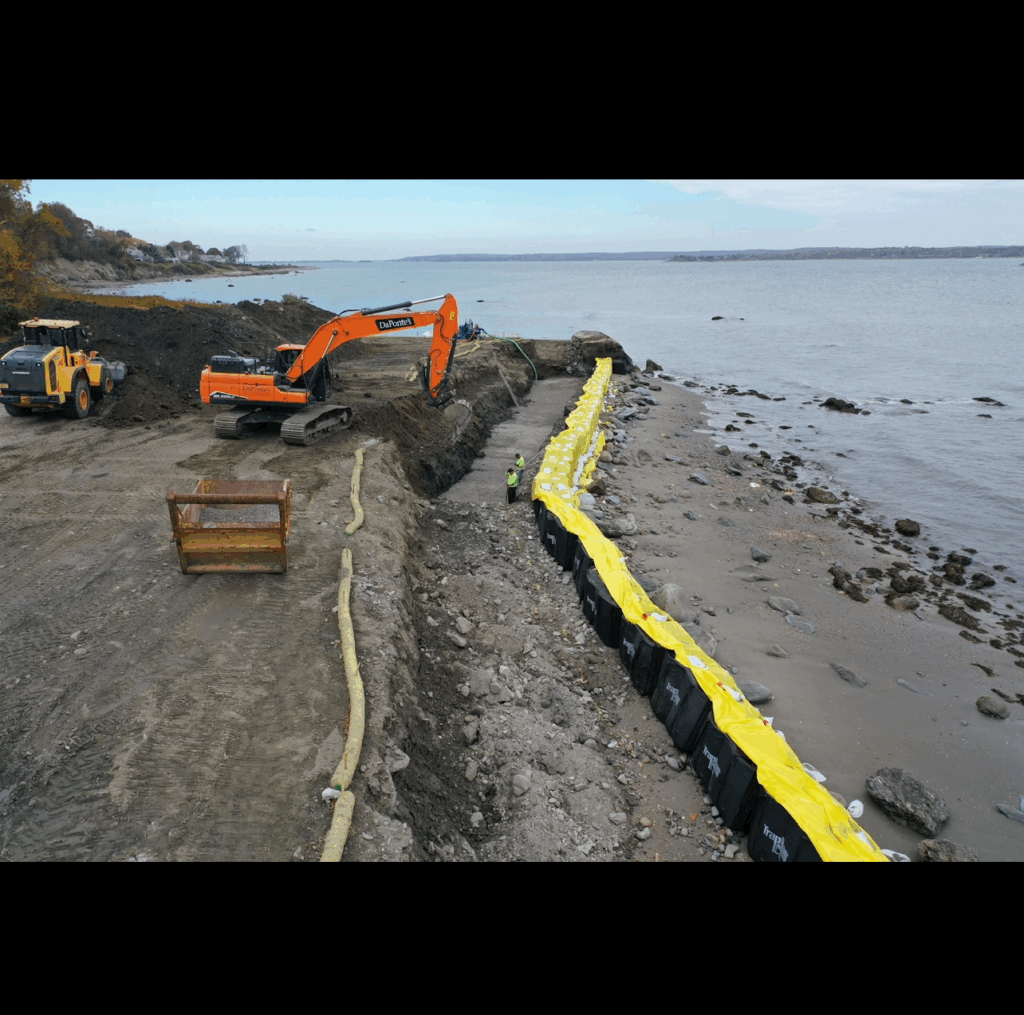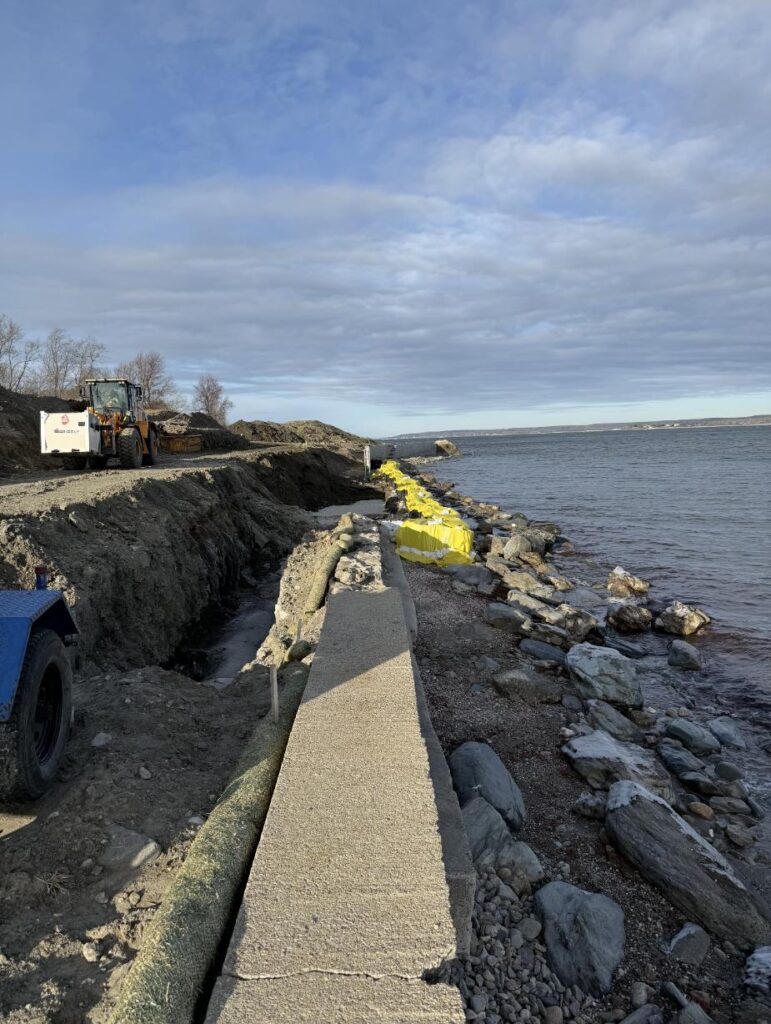Project Specifications
Product Used: TrapBag Cofferdam Bags
Installation Configurations: Two-cell modular wall with ocean-facing liner for a watertight seal
Material: Polypropylene geotextile with integrated lifting straps
Fill Material: Washed gravel
Initial Solution
To stabilize the seawall and maintain a dry workspace, the Cofferdam system was deployed along the seaward face of the structure.
Rapid Deployment & Minimal Resources: Installed quickly using minimal equipment and labor, adapting to uneven coastal terrain.
Cost-Effective Protection: Reduced overall project costs compared to traditional cofferdam methods.
Enhanced Coastal Resilience: Absorbed and dissipated continuous tidal and wave impacts while maintaining barrier stability.
Integration with Construction Efforts: Created a secure work zone for excavation and reinforced concrete pouring, enabling efficient seawall reconstruction.
Installation
To isolate the work area from active tidal and wave forces, DaPonte’s team installed a TrapBag Cofferdam system along the seaward face of the existing wall.
Each TrapBag Cofferdam Bag is a two-cell modular unit, designed for stability and strength when filled with gravel or similar dense materials. The modular design allowed the crew to form a continuous watertight barrier that adapted to the site’s uneven terrain. A liner was installed on the ocean-facing side for added water resistance.
Even as waves from the Sakonnet River, driven by Atlantic Ocean swells, repeatedly crashed against the barrier, the TrapBag Cofferdam held its position. The system absorbed and dissipated wave energy while maintaining a dry and stable workspace behind it for excavation and seawall reconstruction.
Performance
The TrapBag Cofferdam system maintained stability throughout the project despite continuous wave exposure and tidal fluctuation. It performed exceptionally well during high-tide cycles and periods of increased wave activity, preventing overtopping or displacement.
The system’s success allowed it to be expanded beyond the initial work zone to protect adjacent sections of the wall during the final concrete pour. The modular nature of the Cofferdam system made this adjustment quick and efficient without needing additional specialized equipment.
After completion, the system was easily removed without damage, allowing the TrapBag units to be retained and reused for future dewatering and shoreline projects.
Key Outcomes
- Dry Work Zone: Provided a stable workspace behind the cofferdam for excavation and seawall reconstruction.
- Withstood Coastal Forces: Resisted continuous wave and tidal impacts without displacement or failure.
- Reduced Project Costs: Delivered a more economical solution than traditional cofferdam systems.
- Reusable System: Allowed the TrapBag units to be retained and repurposed for future projects.
Conclusion
The Portsmouth, Rhode Island, seawall reconstruction demonstrates the durability, adaptability, and cost-efficiency of the TrapBag Cofferdam system in demanding coastal conditions. Despite direct exposure to open-ocean energy from the Sakonnet River, the TrapBag system delivered a dependable and reusable solution for creating a dry workspace during seawall repair, proving that TrapBag performs where traditional methods could not achieve. Its modular design and reusability ensure long-term value for future projects, proving that TrapBag is a dependable solution for coastal protection and shoreline management where conventional cofferdams fall short.
Watch in action below:
Installation Highlights
- 4ft TrapBag Cofferdam Bags
- Two-cell modular wall with ocean-facing liner for a watertight seal
- Polypropylene geotextile bags with integrated lifting straps
- Filled with washed gravel





